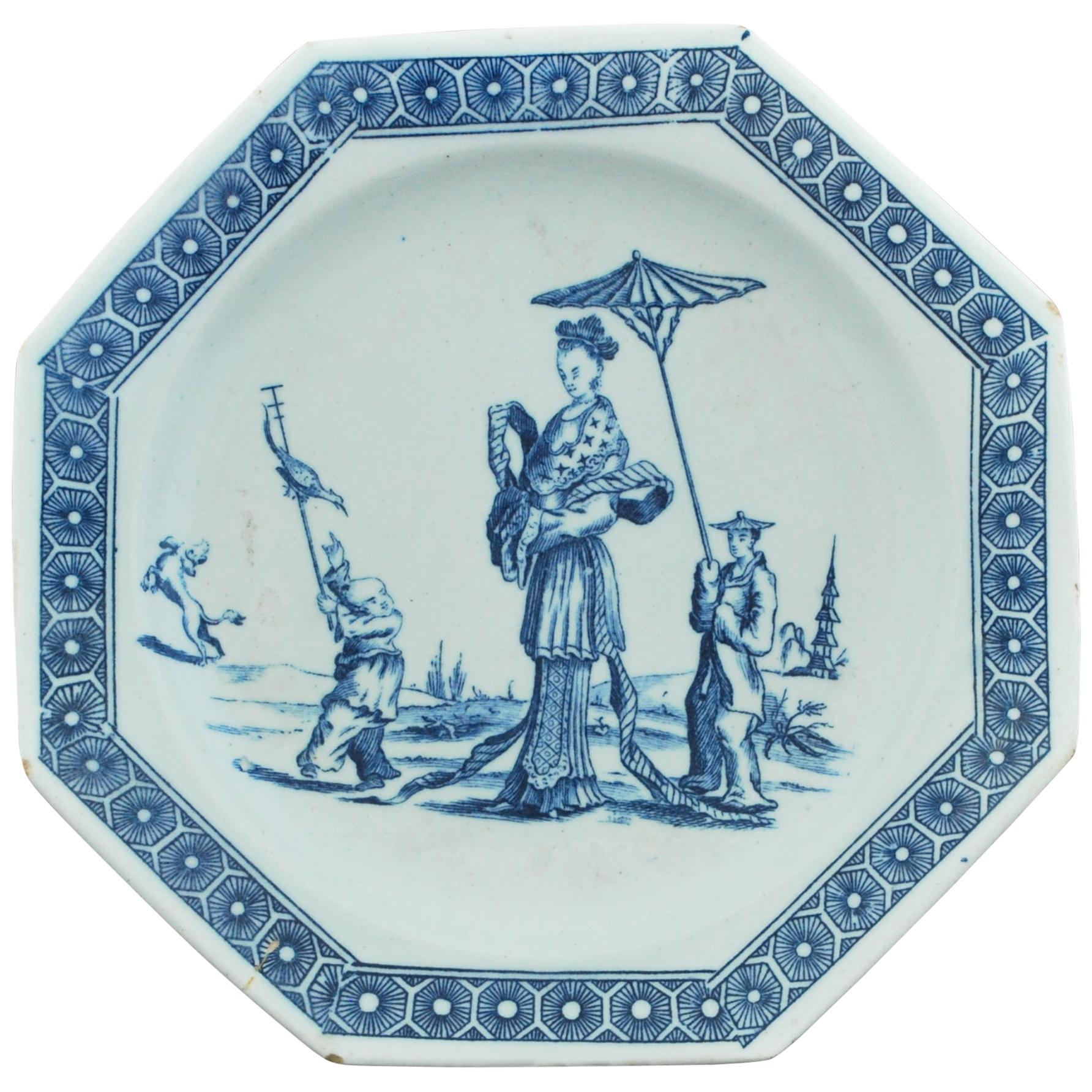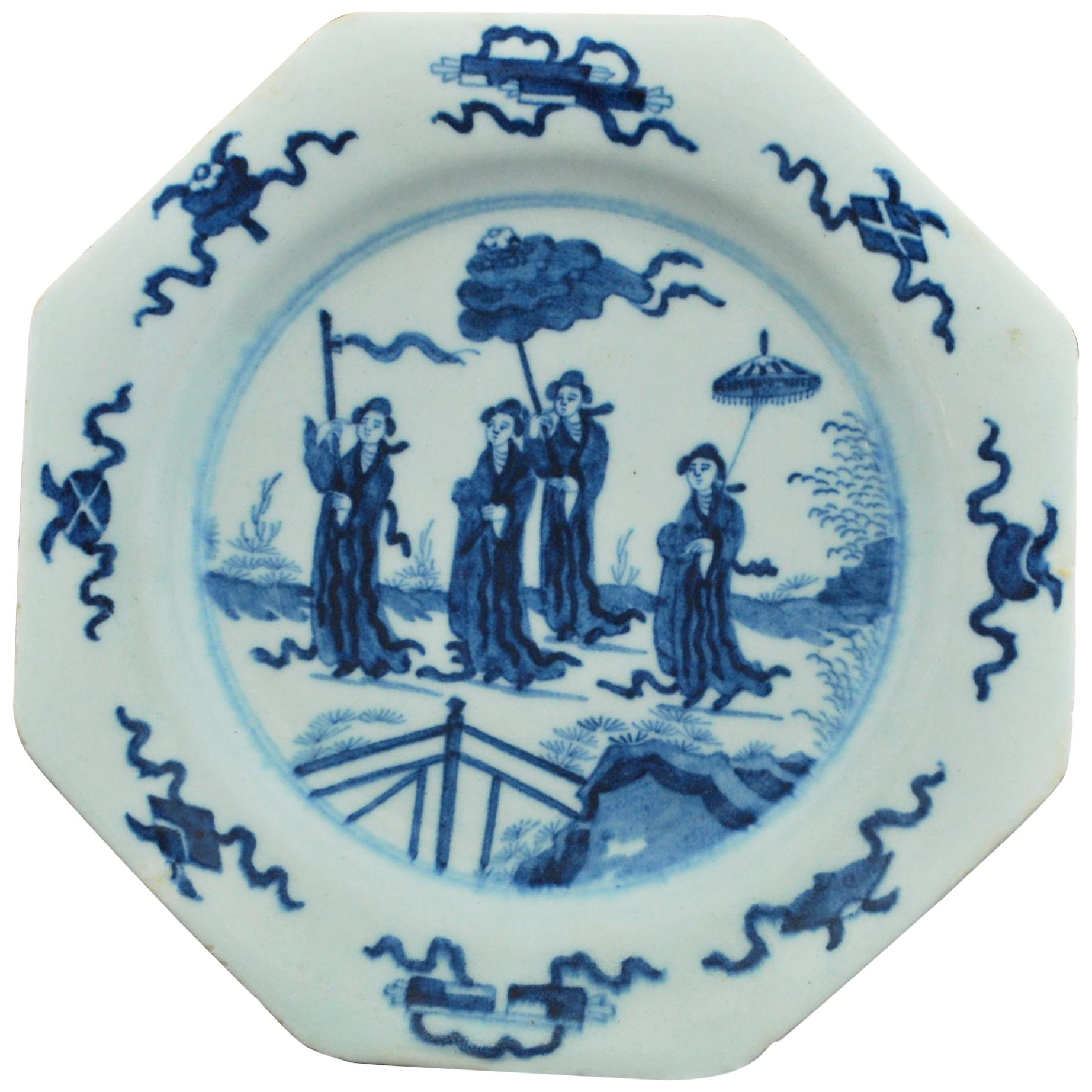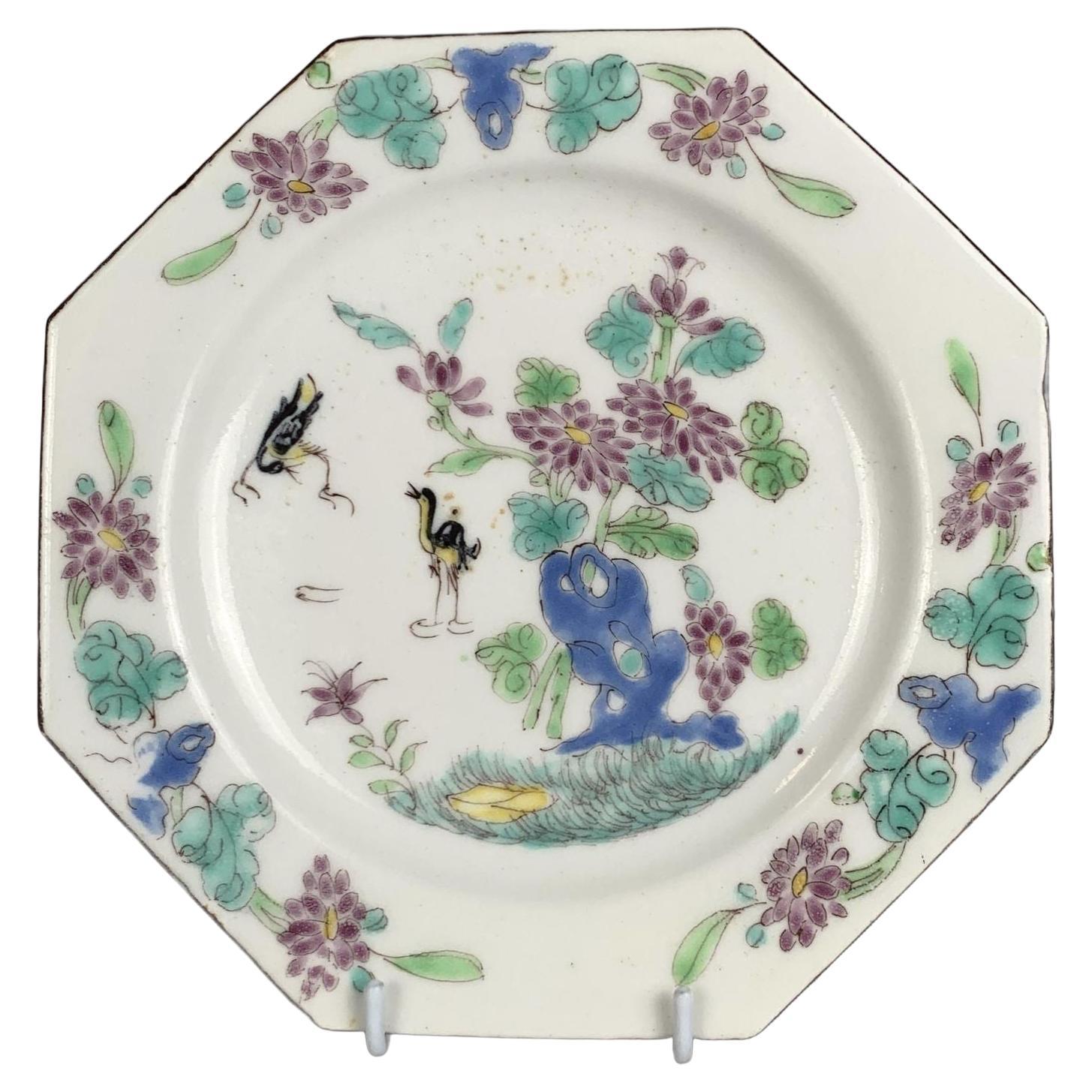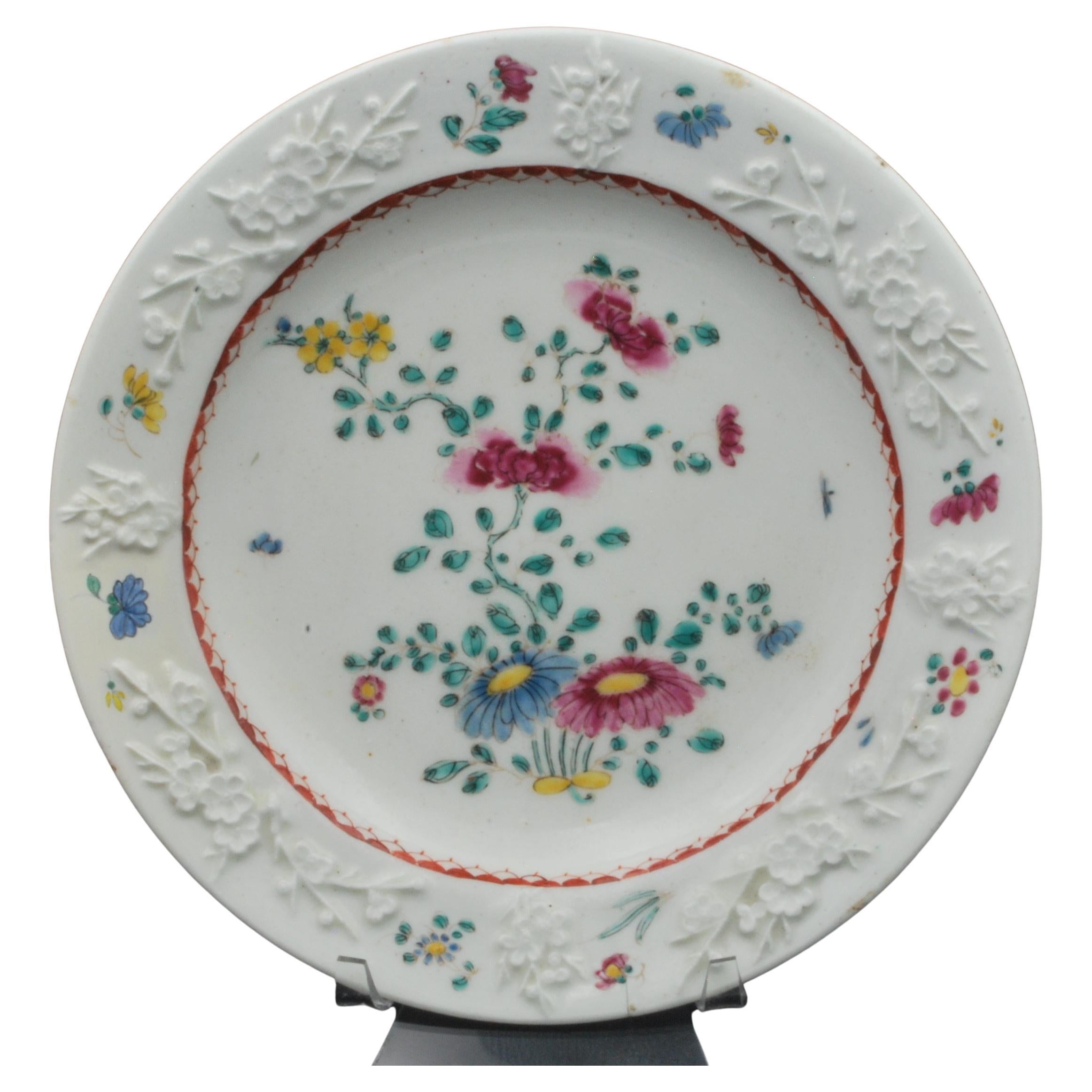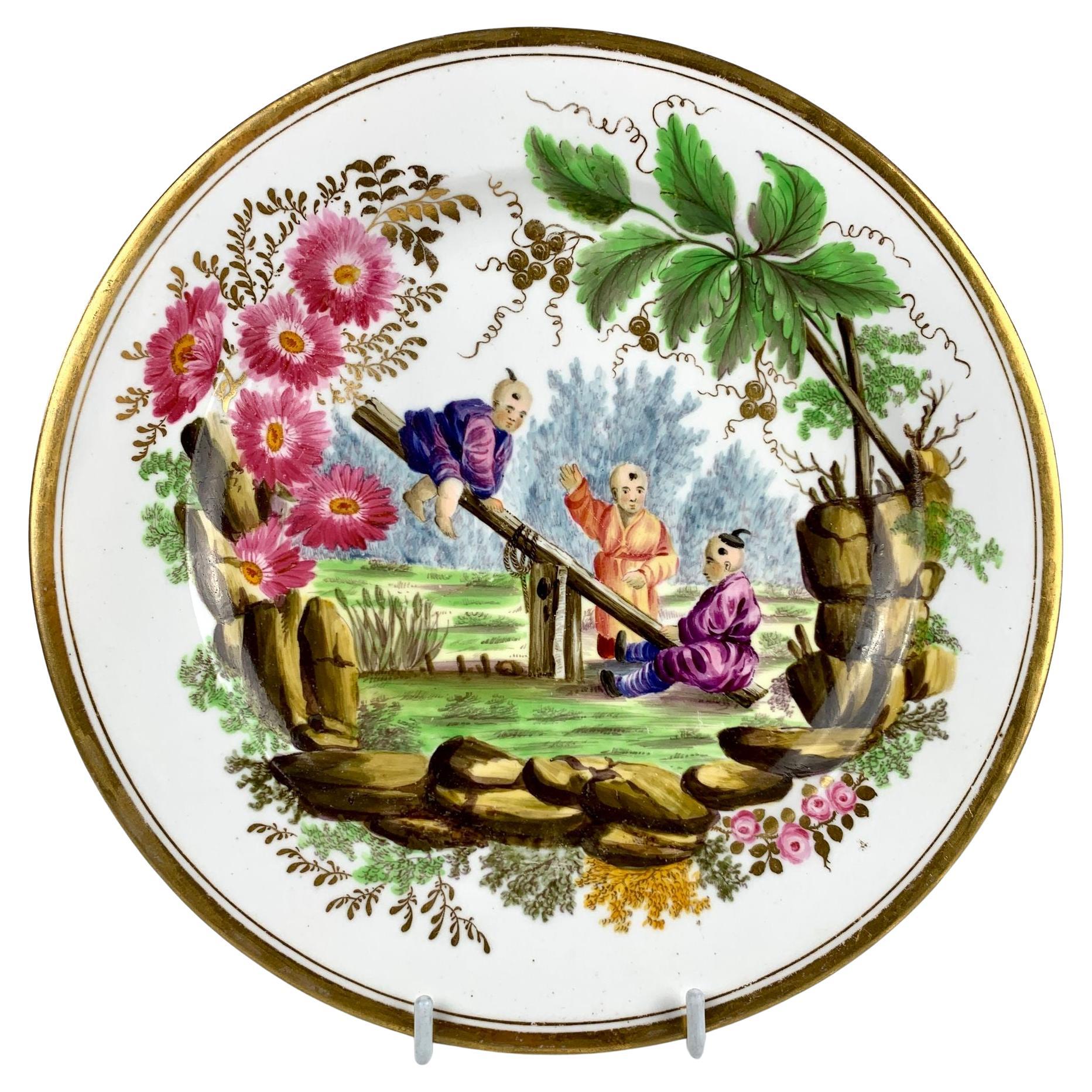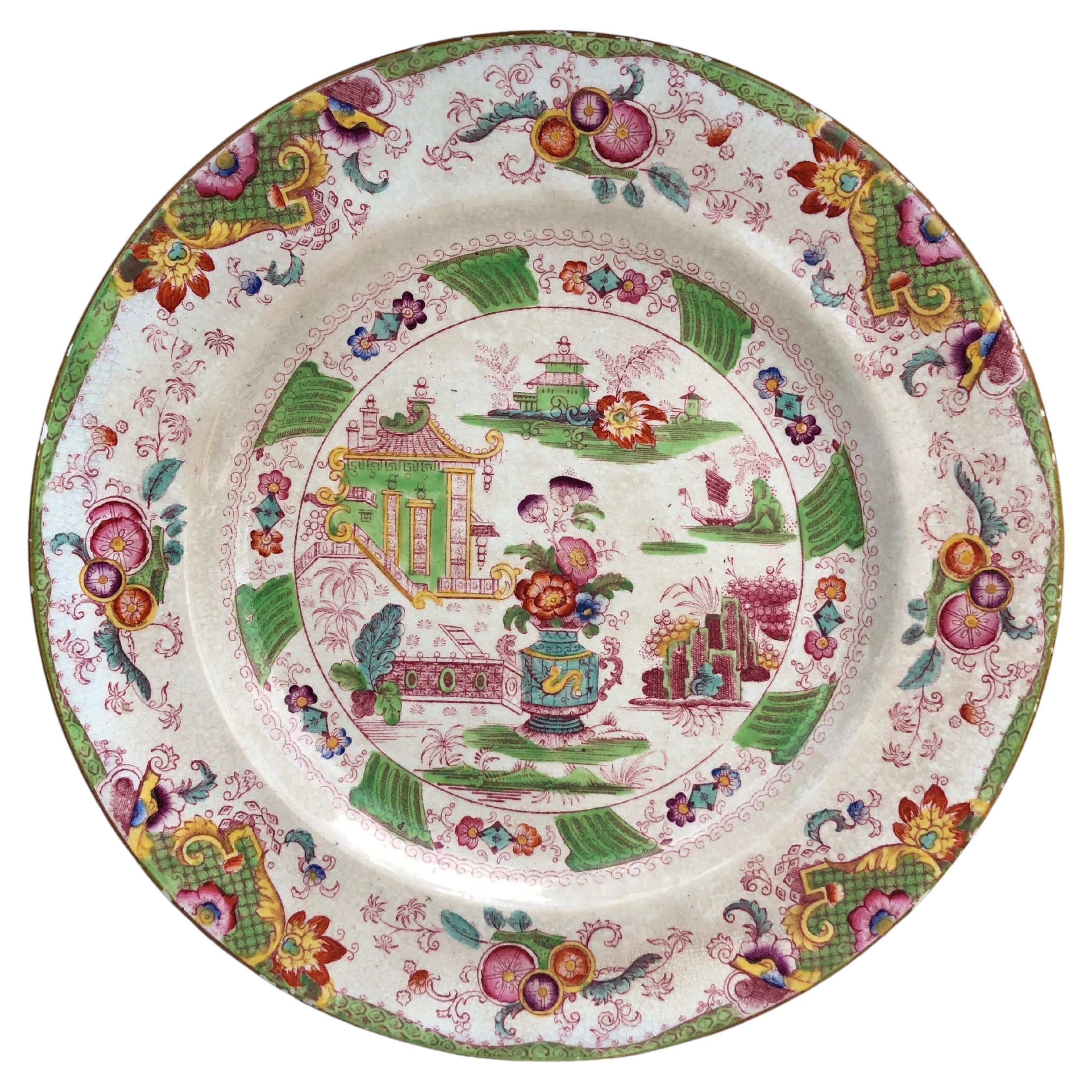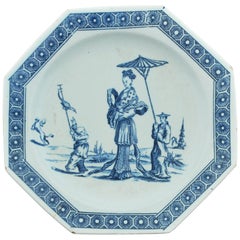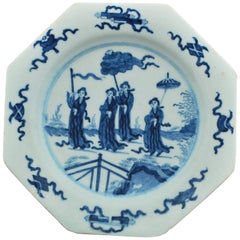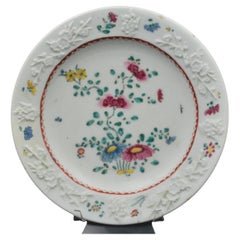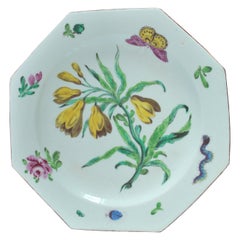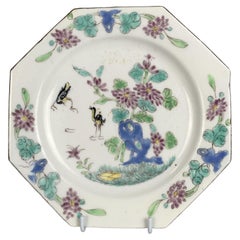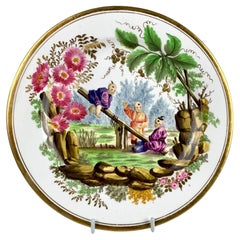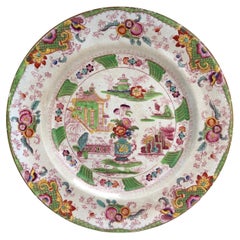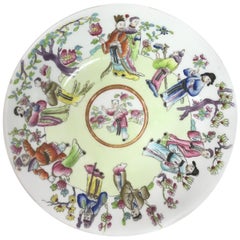Items Similar to Dessert Plate, Bow Porcelain Factory, circa 1760
Want more images or videos?
Request additional images or videos from the seller
1 of 7
Dessert Plate, Bow Porcelain Factory, circa 1760
$2,500
£1,895.75
€2,193.47
CA$3,533.84
A$3,939.55
CHF 2,054.64
MX$47,638.34
NOK 25,827.82
SEK 24,438.28
DKK 16,371.99
About the Item
Circular plate, the well outlined and transfer printed in black/brown outline and filled-in with 'wet' enamels all with Chinese figures in a garden and a child playing with an excited dog; all in a famille rose palette including rose purple, lilac, violet, opaque blue, yellow and blue-green. The rim lined in brown and similarly transfer decorated with small groups of figures and furniture.
Finely potted; dense body with close fitting white glaze. Straw translucency. Base glazed. D. 7.5 in (19 cm).
Provenance: Taylor Collection; Parkside Antiques, Melbourne, 1981.
- Creator:Bow Porcelain (Manufacturer)
- Dimensions:Height: 0.5 in (1.27 cm)Diameter: 7.5 in (19.05 cm)
- Style:Chinoiserie (Of the Period)
- Materials and Techniques:Porcelain,Molded
- Place of Origin:
- Period:
- Date of Manufacture:circa 1760
- Condition:Wear consistent with age and use. Flea-bites to rim.
- Seller Location:Melbourne, AU
- Reference Number:Seller: 51481stDibs: LU3151320600832
About the Seller
5.0
Vetted Professional Seller
Every seller passes strict standards for authenticity and reliability
Established in 2005
1stDibs seller since 2017
79 sales on 1stDibs
Typical response time: <1 hour
- ShippingRetrieving quote...Shipping from: Melbourne, Australia
- Return Policy
Authenticity Guarantee
In the unlikely event there’s an issue with an item’s authenticity, contact us within 1 year for a full refund. DetailsMoney-Back Guarantee
If your item is not as described, is damaged in transit, or does not arrive, contact us within 7 days for a full refund. Details24-Hour Cancellation
You have a 24-hour grace period in which to reconsider your purchase, with no questions asked.Vetted Professional Sellers
Our world-class sellers must adhere to strict standards for service and quality, maintaining the integrity of our listings.Price-Match Guarantee
If you find that a seller listed the same item for a lower price elsewhere, we’ll match it.Trusted Global Delivery
Our best-in-class carrier network provides specialized shipping options worldwide, including custom delivery.More From This Seller
View AllDessert Plate, Bow Porcelain Factory, circa 1759
By Bow Porcelain
Located in Melbourne, Victoria
Plate, circa 1758-1760:
Small octagonal plate, the well printed in blue underglaze with La Dame Chinoise (also called the Promenade Chinoise) showing a tall oriental lady with tw...
Category
Antique Mid-18th Century English Chinoiserie Porcelain
Materials
Porcelain
Dessert Plate, Bow Porcelain Factory, circa 1756
By Bow Porcelain
Located in Melbourne, Victoria
Plate, circa 1755-1760: Octagonal plate, the decoration after an oriental original (possibly from the region now modern Bhutan), with four robed ladies walking through a stylized lan...
Category
Antique Mid-18th Century English Chinoiserie Porcelain
Materials
Porcelain
Pair of Famille Rose & Prunus Plates, Bow Porcelain Factory, circa 1753
By Bow Porcelain
Located in Melbourne, Victoria
A fine pair of plates with raised decoration of prunus, and painted with a famille rose pattern.
Category
Antique Mid-18th Century English Chinoiserie Porcelain
Materials
Porcelain
Botanical Plate, Bow Porcelain Factory, circa 1755
By Bow Porcelain
Located in Melbourne, Victoria
A fine octagonal plate painted in the botanical style; possibly the yellow gloriosa climbing lily.
Provenance: Taylor Collection; Robyn Robb 2003.
Filled edge chips.
Category
Antique Mid-18th Century English Neoclassical Porcelain
Materials
Porcelain
Dated Crowther Plate, Bow Porcelain Factory, 1770
By Bow Porcelain
Located in Melbourne, Victoria
The so-called ‘Crowther Plate’ dated January 1770:
Octagonal, painted in blue underglaze with the monogram ‘RC’ in a floral cartouche and with elaborate scroll, pendant and cell a...
Category
Antique 1770s English Neoclassical Porcelain
Materials
Porcelain
Famille Rose Tea Bowl & Saucer, Bow Porcelain Factory, circa 1755
By Bow Porcelain
Located in Melbourne, Victoria
A delicate tea-bowl and saucer, decorated after the Chinese in the Famille Rose palette. This style of painting, known as 'wet enamelling', is very attractive but quite scarce in Bow...
Category
Antique Mid-18th Century English Chinoiserie Porcelain
Materials
Porcelain
You May Also Like
Antique Bow Porcelain Plate England Circa 1760
By Bow Porcelain
Located in Katonah, NY
This mid-18th-century Bow Porcelain plate features a hand-painted chinoiserie scene with a pair of black storks.
One stork wades in the water while the other flies above it.
Near the...
Category
Antique Mid-18th Century English Chinoiserie Decorative Dishes and Vide-...
Materials
Porcelain
Antique Porcelain Chinoiserie Plate Hand Painted by Minton England Circa 1810
By Minton
Located in Katonah, NY
Made in England circa 1810, this Minton porcelain dish is a masterpiece of English Regency chinoiserie.
The hand-painted scene exhibits vibrant colors, intricate details, and a playful spirit.
The dish shows three young boys playing on a seesaw. The boys display a delightful childish innocence.
Jean-Baptiste Pillement's drawings inspired this Minton image ( for more on Pillement, see below). The last image shows an image of Pillement's work.
The underside of the plate shows the Minton mark in underglaze blue with pattern number 539.
Dimensions: Diameter 8.25 in. x H 1.5 in.
Condition: Excellent
Price: $480
For more information on the Chinese Sports Series, see Loren Zeller's article "Jean-Baptiste Pillement's Recueil de Plusieurs Jeux d'Enfants Chinois: A Review of the Artist's Work as Source for 18th and 19th Century Ceramic Designs" in the Northern Ceramic Society Journal, Volume 32, June 20
Jean-Baptiste Pillement was a French painter and designer known for his exquisite and delicate drawings and the engravings done after his drawings. The drawings influenced the spread of the Rococo style, particularly the taste for chinoiserie throughout Europe. For an image of an item from this Minton pattern...
Category
Antique Early 19th Century English Chinoiserie Decorative Dishes and Vid...
Materials
Porcelain
19th Century English Chinoiserie Pagoda Plate
Located in Austin, TX
19th century English Chinoiserie Pagoda plate.
Category
Antique 1890s English Chinoiserie Dinner Plates
Materials
Ceramic, Faience
Small English Chinoiserie Plate
Located in New York, NY
Small English chinoiserie plate. William IV chinoiserie plate or vide poche/ saucer with hand painted multicolored court figures and notables with t...
Category
Antique Early 19th Century English Chinoiserie Decorative Dishes and Vid...
Materials
Porcelain
Small English Chinoiserie Plate
Located in New York, NY
Small English chinoiserie plate. William IV Staffordshire plate with charming brightly hued oriental themed scene of figures with parasol,, hamper a...
Category
Antique Early 19th Century English Chinoiserie Decorative Dishes and Vid...
Materials
Ceramic
Early Miles Mason Saucer Dish Porcelain Boy at Door Pattern, circa 1805
By Miles Mason Porcelain
Located in Lincoln, Lincolnshire
This is a porcelain Saucer Dish or Bowl in the "Boy at the Door" pattern, made by Miles Mason (Mason's) dating to very early in the 19th century.
This d...
Category
Antique Early 19th Century English Chinoiserie Ceramics
Materials
Porcelain
More Ways To Browse
Enamel Bow
Dessert Plates Green
Bow China
Antique Dog Plates
18th Century Bow Porcelain
China Dessert Plates
Green Glass Dog
Famille Rose Chinoiserie
Antique Chinese Dessert Plate
Antique Prints Melbourne
Straw Dog
Chinoiserie Straw
Glass Dessert Cups
Staffordshire China
Key Greek Antique Glass
Hard Paste Porcelain
Rare Blue And White Plates
Victorian Porcelain Plates
